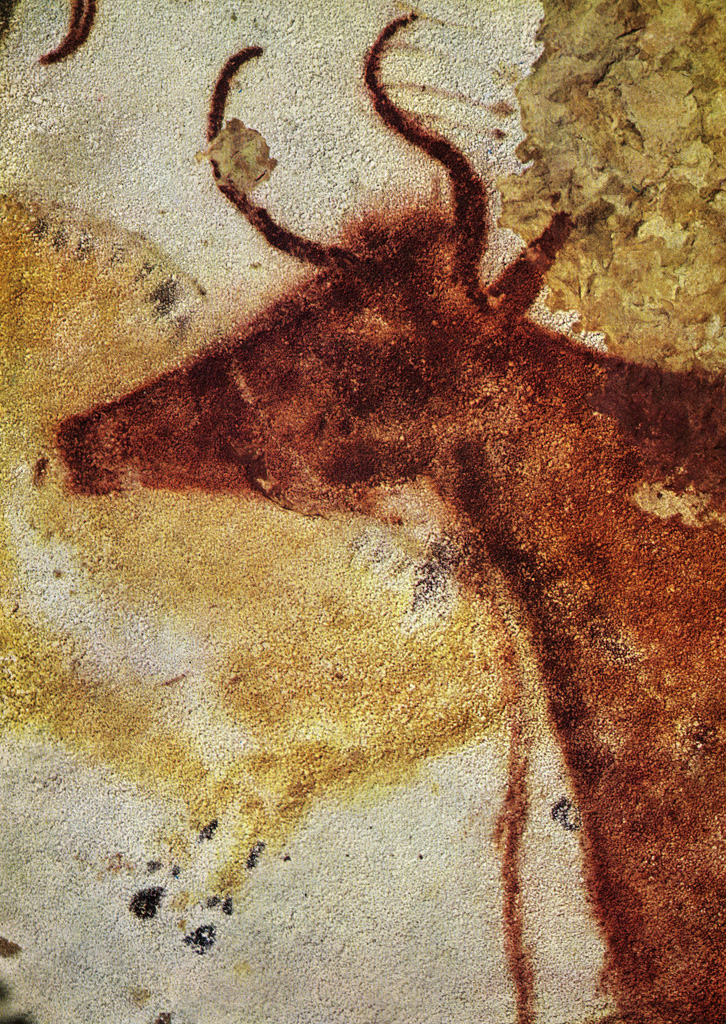Shamanism
Modern researchers have a "consciousness of rationality"
(111), Lewis-Williams argues, because that is what they value, but it
causes them to give little consideration to the existence and universality
of altered states of consciousness. Other societies have not had this
bias, even Medieval society trusted messages from God, and rationality
is not necessarily what is required to create visual images. Nearly every
culture reports some form of altered state (131). Native people believe
these alternative inward realities may be more real than the world of
daily life (132). Lewis-Williams quotes Weston La Barre on altered states:
"...hallucination, trance, possession, vision, sensory deprivation
and especially the dream state - apart from their cultural contexts and
symbolism - are essentially the same psychic states found everywhere among
mankind... shamanism or direct contact with the supernatural in these
states... is the de facto source of all revelation, and ultimately of
all religions"(135). In modern studies, subjects who are put into
a sound proof dark condition report hallucinations after a few hours (124).
Traditional methods of inducing altered states include prolonged rhythmic
drumming, flashing lights, sustained rhythmic dancing, as well as fatigue,
pain, fasting and hallucinogenic plants.
Lewis-Williams is an atheist and a materialist. Whatever is taking place,
he believes, it is taking place firmly within the skull and it is entirely
an electro-chemical process. Nevertheless, inward visions, he calls them
entoptic states, others call them phosphenes, are universal among mankind.
His theory is that Paleolithic man was neurologically identical to ourselves
(205). Dreams prove that everyone has the ability to hallucinate, he says,
and accounts for the worldwide similarity of shamanic visions. Dots, zigzags,
shimmering light, wavy threads are often seen in the beginning of a trance.
People who have migraine headaches see similar structures. These types
of simple hallucinations, he believes, could explain some of the non-figurative
signs in the caves, the geometric figures (207).
Lewis believes that for Paleolithic man, entering the caves was not merely
metaphoric or symbolic but that it was virtually the same thing as going
into trance. The underworld was the spirit world. Having a vision underground
was a validation of their world view (209). Many shamans believe that
spirit animals mingle with herds of real animals (196). Similarly, cave
artists often used natural rock features as features of animals they painted.
Bison could be painted sideways or upside down if a bulge in the rock
could be used to represent its back (220). A rock that looks like a horse's
head simply has eyes and a mouth drawn. The navel of the Venus of Willendorf
(a well known small carving) is a natural feature of the rock in which
it is carved. (If it is a fertility symbol, the navel would be the connection
with the mother of the mother.) The animals are seen and released from
the rock (211). Many animals are unfinished - possibly only enough is
drawn to represent the vision. They often have no hooves. They seem to
float on the walls. They lay over each other. Lewis believes the images
were not so much taken underground, they were found there (210).

Prehistoric Painting: Lascaux - or the Birth of Art, text by Georges Bataille, photos by Hans Hinz, Claudio Emmer. Albert Skira publisher, Switzerland, 1955.